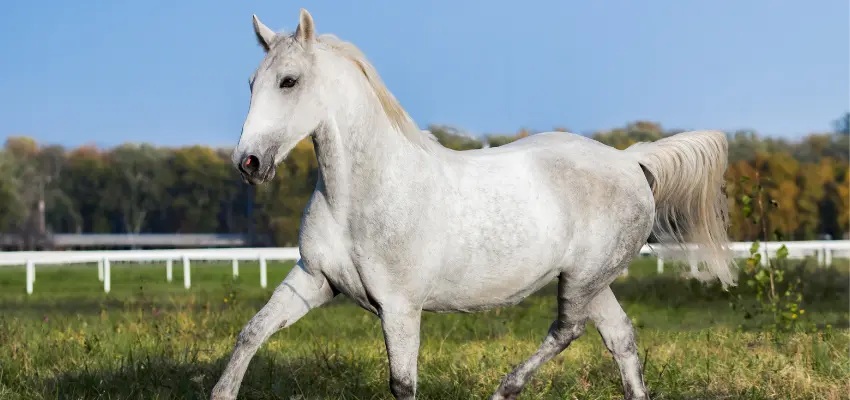In the depths of horse riding history, few stories are as captivating as that of the Lipizzaner horses, a breed renowned for their elegance, grace, and the legendary performances of the Spanish Riding School in Vienna.

This story is not just about the remarkable abilities of these horses but also about their dramatic survival during one of the darkest times in modern history.
Origins of the Lipizzaner Breed
The Lipizzaner breed traces its origins back to the 16th century when the Habsburg monarchy established a breeding program that combined Spanish, Italian, and Arabian bloodlines.

The breeding program was founded in Lipica, located in modern-day Slovenia, and from this town, the breed took its name.
These horses were specifically bred for the Spanish Riding School, where they would perform the highly disciplined art of classical dressage, often referred to as "horse ballet."
The performances, known for the dramatic "Airs Above the Ground" maneuvers, became a symbol of aristocratic culture and military precision. The Lipizzaners were selected for their strength, agility, and intelligence, traits that were essential for the complex and demanding movements required in classical dressage.
World War II and the Threat to the Lipizzaners
However, the Lipizzaner’s future was put in jeopardy during World War II. In 1945, as the war raged across Europe, the Lipizzaner horses at the Piber Stud in Austria were in danger of being seized or destroyed by advancing forces. The breed, a symbol of European cultural heritage, was at risk of being lost forever.
Recognizing the historical and cultural significance of these horses, a daring rescue operation was orchestrated by General George S. Patton of the U.S. Army.

With the help of Colonel Alois Podhajsky, the director of the Spanish Riding School, the horses were evacuated and transported to safety.

Colonel Podhajsky, aware of the imminent threat, personally sought out General Patton, who was an avid horseman himself. Understanding the importance of preserving the Lipizzaner horses, Patton authorized "Operation Cowboy," a mission to rescue the horses from behind enemy lines.
Operation Cowboy: A Daring Rescue
"Operation Cowboy" involved American troops crossing into Czechoslovakia to retrieve the Lipizzaners, which were at risk due to the advancing Soviet forces. The operation was fraught with danger, as it required coordination between soldiers and civilians, and the safe transport of the horses through war-torn regions.
The rescue was a success, and the Lipizzaner horses were saved from potential extinction.
This daring operation not only preserved a breed with a rich cultural legacy but also highlighted the deep bond between humans and horses, and the extraordinary lengths to which people would go to protect these magnificent animals.
Legacy of the Lipizzaner Horses
Today, the Lipizzaner horses continue to perform at the Spanish Riding School in Vienna, captivating audiences with their grace and precision. They stand as living symbols of resilience, cultural heritage, and the enduring partnership between horse and rider.
The performances of the Lipizzaners, particularly the "Airs Above the Ground," remain a testament to centuries of training and the unbroken tradition of classical dressage.
The horses’ survival story during World War II adds a layer of historical depth to their performances, reminding audiences of the incredible journey these animals have undergone.

The tale of the Lipizzaner horses is a powerful reminder of the incredible stories that are intertwined with the equestrian world—stories of courage, survival, and the unbreakable bond between humans and horses.
It underscores the importance of preserving cultural heritage and the vital role that animals play in our shared history.
The Lipizzaner horses are not just a breed; they are a symbol of endurance, beauty, and the deep connections that exist between humans and animals.
Their story, from their origins in the 16th century to their dramatic rescue during World War II, is a legendary tale that continues to inspire and captivate.
As they perform with grace and precision at the Spanish Riding School, the Lipizzaners stand as living reminders of a rich equestrian legacy and the timeless bond between horse and rider.
Comments